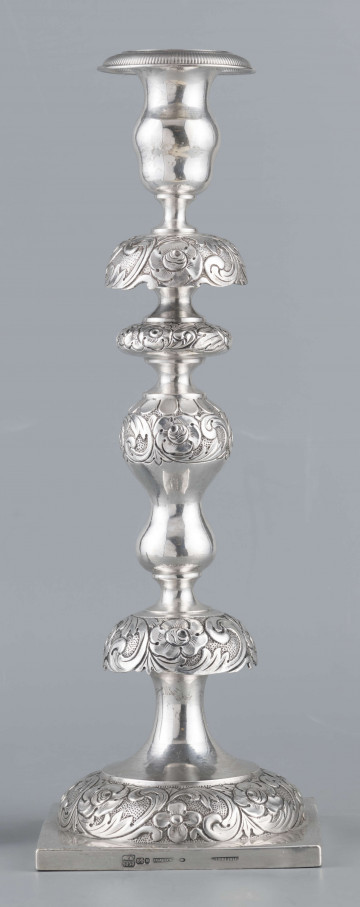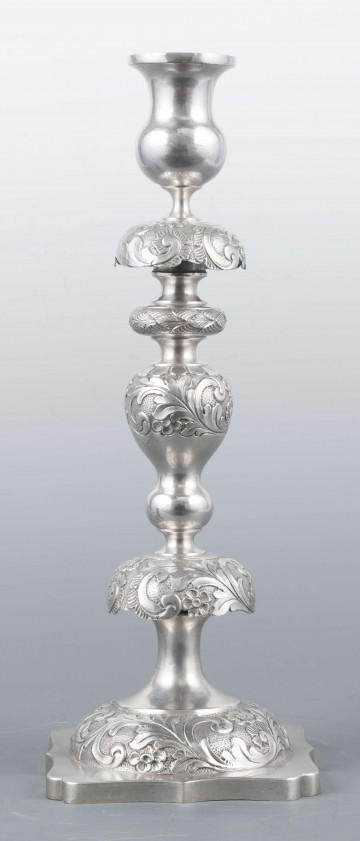
Basket-platter
1832 — 1850
National Museum in Lublin
Part of the collection: Polish and European goldsmithery of the 17th–19th c.
This rectangular casket, with truncated corners and a lid, covered with a relief decoration showing an idyllic park scene, is nothing other than a snuff box – a decorative box being a small container intended for storing snuff, i.e., powdered tobacco, which was sometimes also flavoured.
Snuff arrived in Europe via Spanish and Portuguese sailors. It was their sea voyages that brought to the Old Continent the custom seen among others in the Taino Indians of Haiti, where tobacco was ground into powder and sniffed through the nose with a Y-shaped tube.
Although Europeans were already taking snuff more and more frequently at the end of the 16th century, special boxes for storing it did not appear until the second half of the 17th century. Initially, the first snuff boxes in the form of a small cone or bottle, made of wood, leather or horns, did not serve a decorative purpose. In the 18th century, however, they became an indispensable element of everyday use, and their forms and the materials they were made of depended solely on the owner's imagination and wealth. Thus, they were made of all available materials, while those intended for the nobility or the rich bourgeoisie were most often richly decorated with expensive stones, ivory, miniature paintings or repoussé, i.e., decoration created by cold hammering-in silver, gold or copper, giving on the other side a convex pattern, as in the case of the snuffbox shown here. Not surprisingly, the image of snuff boxes was quickly influenced by the dictates of the prevailing fashion, which regulated the appearance of the box, adapting it to the seasons, circumstances, gender, age, dress, and even the type of snuff.
In the following century, however, snuff and the custom of taking it gave way to the new fashion of smoking cigars or cigarettes. Popular snuff boxes evolved into equally popular cigarette holders.
Author / creator
Dimensions
cały obiekt: height: 8,5 cm, width: 1,7 cm
Object type
goldsmith art
Technique
niello
Material
silver
Creation time / dating
Creation / finding place
Owner
The National Museum in Lublin
Identification number
Location / status

1832 — 1850
National Museum in Lublin

1858
National Museum in Lublin

1862
National Museum in Lublin
DISCOVER this TOPIC
Castle Museum in Łańcut
DISCOVER this PATH
Educational path